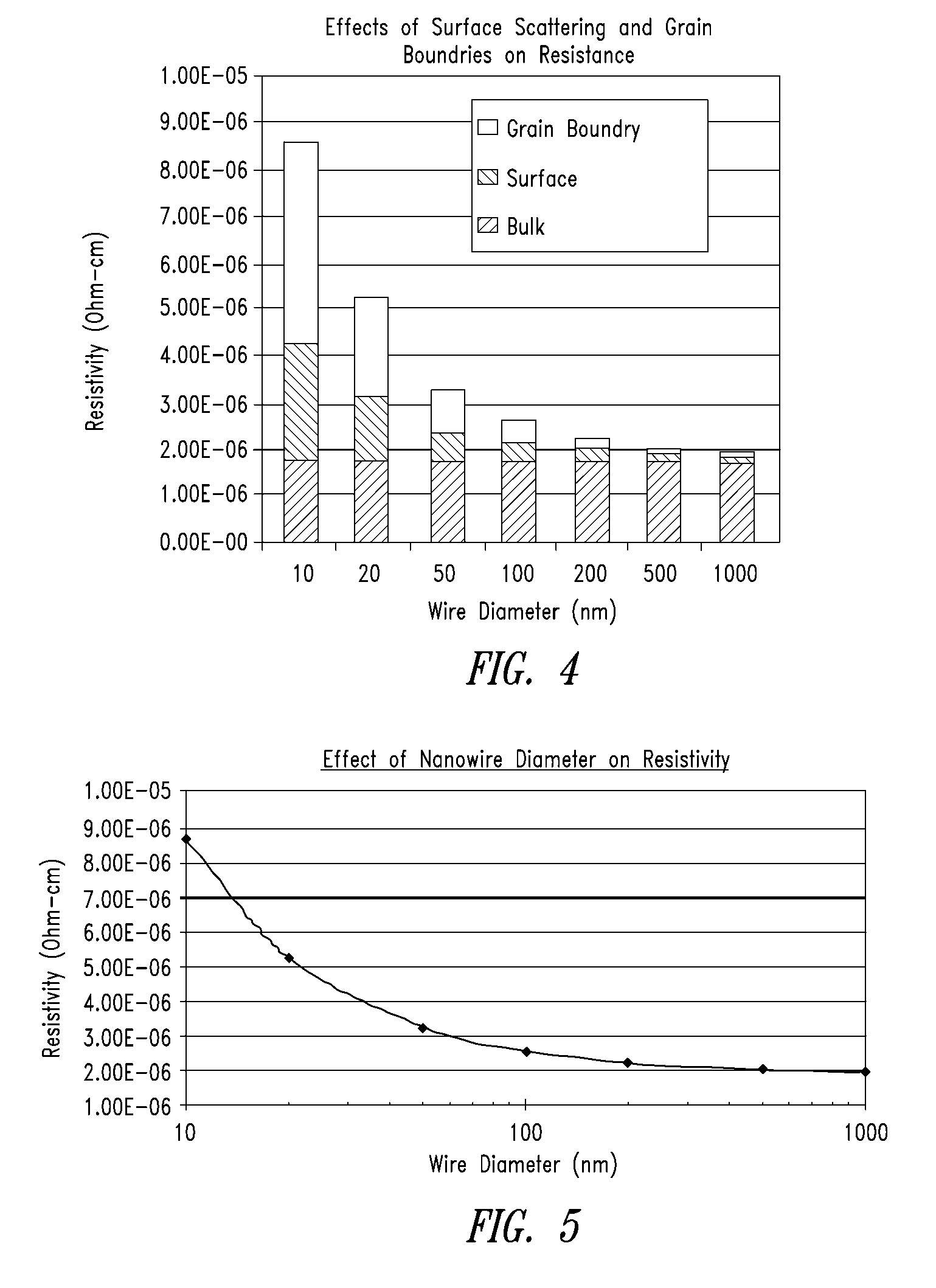Nanowire-based transparent conductors and applications thereof
a conductor and nanowire technology, applied in the field of transparent conductors, can solve the problems of metal oxide film adhesion to substrate, metal oxide film is fragile and prone to damage, and the application of metal oxide film on flexible substrates is severely limited
- Summary
- Abstract
- Description
- Claims
- Application Information
AI Technical Summary
Benefits of technology
Problems solved by technology
Method used
Image
Examples
example 1
Synthesis of Silver Nanowires
[0358]Silver nanowires were synthesized by the reduction of silver nitrate dissolved in ethylene glycol in the presence of poly(vinyl pyrrolidone) (PVP) following the “polyol” method described in, e.g. Y. Sun, B. Gates, B. Mayers, & Y. Xia, “Crystalline silver nanowires by soft solution processing”, Nanoletters, (2002), 2(2) 165-168. A modified polyol method, described in U.S. application Ser. No. 11 / 766,552, in the name of Cambrios Technologies Corporation, produces more uniform silver nanowires at higher yields than does the conventional “polyol” method. This application is incorporated by reference herein in its entirety.
example 2
Preparation of a Transparent Conductor
[0359]An Autoflex EBG5 polyethylene terephthalate (PET) film 5 μm thick was used as a substrate. The PET substrate is an optically clear insulator. The light transmission and haze of the PET substrate are shown in Table 2. Unless specified otherwise, the light transmission was measured using the methodology in ASTM D1003.
[0360]An aqueous dispersion of silver nanowires was first prepared. The silver nanowires were about 70 nm to 80 nm in width and around 8 μm in length. The concentration of the silver nanowires (AgNW) was about 0.5% w / v of the dispersion, resulting in an optical density of about 0.5 (measured on a Molecular Devices Spectra Max M2 plate reader). The dispersion was then coated on the PET substrate by allowing the nanowires to sediment onto the substrate. As understood by one skilled in the art, other coating techniques can be employed e.g., flow metered by a narrow channel, die flow, flow on an incline and the like. It is further u...
example 3
Accelerated H2S Corrosion Tests
[0369]Sulfides, such as hydrogen sulfide (H2S), are known corrosive agents. The electrical properties of the metal nanowires (e.g., silver) can potentially be affected in the presence of the atmospheric sulfides. Advantageously, the matrix of the transparent conductor serves as a gas permeation barrier. This prevents, to certain degree, the atmospheric H2S from contacting the metal nanowires embedded in the matrix. Long-term stability of the metal nanowires can be further obtained by incorporating one or more corrosion inhibitors in the matrix, as described herein.
[0370]In the United States, the amount of H2S in the air is about 0.11-0.33 parts per billion (ppb). At this level, corrosion is expected to take place over an extended period of time. Thus, an accelerated H2S corrosion test was designed to provide an extreme case of H2S corrosion.
[0371]Freshly cooked egg yolks were broken into pieces and sealed in a plastic bag. A H2S meter (Industrial Scien...
PUM
| Property | Measurement | Unit |
|---|---|---|
| aspect ratio | aaaaa | aaaaa |
| electrically conductive | aaaaa | aaaaa |
| conductive | aaaaa | aaaaa |
Abstract
Description
Claims
Application Information
 Login to View More
Login to View More - R&D
- Intellectual Property
- Life Sciences
- Materials
- Tech Scout
- Unparalleled Data Quality
- Higher Quality Content
- 60% Fewer Hallucinations
Browse by: Latest US Patents, China's latest patents, Technical Efficacy Thesaurus, Application Domain, Technology Topic, Popular Technical Reports.
© 2025 PatSnap. All rights reserved.Legal|Privacy policy|Modern Slavery Act Transparency Statement|Sitemap|About US| Contact US: help@patsnap.com



